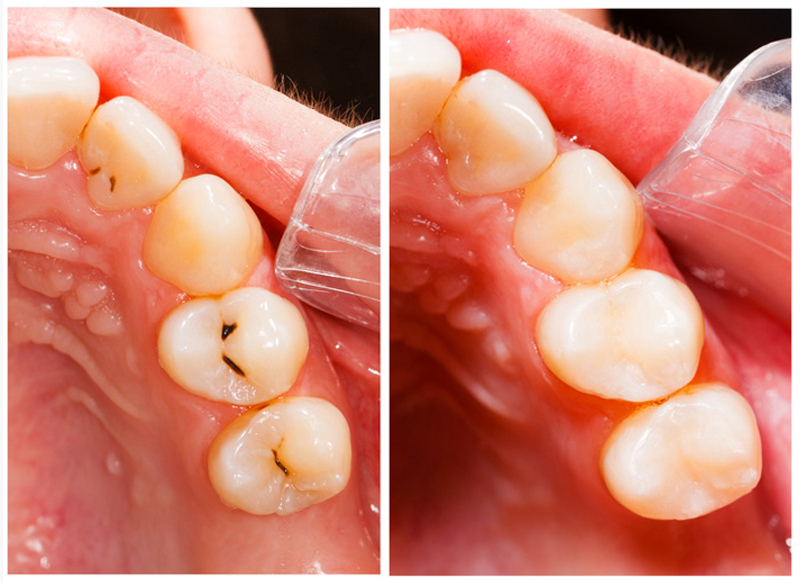
Dental Fillings in Phillipsburg, NJ
Cavities are one of the most common dental issues faced by patients of all ages. At Alpine Dental Care, we offer tooth-colored fillings to treat cavities and restore the health and function of your teeth. Dr. Patel and our team use the latest materials and techniques to ensure your filling blends seamlessly with your natural teeth, so you can smile confidently.
What Are Dental Fillings?
A dental filling is a restorative treatment used to repair tooth damage caused by cavities or minor fractures. At Alpine Dental Care, we use tooth-colored composite resin for fillings, providing a durable and natural-looking result that restores the structure and function of your tooth.
Request an AppointmentBenefits of Tooth-Colored Fillings
- Natural Appearance: Composite resin fillings are designed to match the color of your teeth, making them nearly invisible.
- Durable and Long-Lasting: When properly cared for, tooth-colored fillings can last for many years, restoring your tooth’s strength and structure.
- Preserves Tooth Structure: Unlike metal fillings, composite resin bonds directly to your tooth, allowing for a more conservative restoration.
- No Sensitivity to Temperature: Composite fillings are less likely to cause sensitivity to hot and cold compared to metal fillings.
Why Choose Dr. Patel for Your Dental Fillings?
Dr. Patel brings years of experience in providing high-quality dental fillings to patients in Phillipsburg, NJ. With a commitment to patient comfort and modern technology, Dr. Patel ensures that every filling is precisely placed for maximum comfort and durability. Our team is dedicated to restoring your smile with care and expertise.
The Dental Filling Procedure
- Diagnosis and Preparation: During your visit, Dr. Patel will examine the affected tooth and may take X-rays to assess the extent of the damage. If a cavity is detected, Dr. Patel will recommend a filling to restore the tooth.
- Numbing the Area: Before the procedure, a local anesthetic is applied to numb the tooth and surrounding tissue, ensuring a pain-free experience.
- Removing Decay: The decayed portion of the tooth is carefully removed, leaving a clean and healthy surface for the filling.
- Placing the Filling: Composite resin is applied in layers and shaped to match the natural contours of your tooth. A special light is used to harden each layer.
- Final Adjustments: Once the filling is in place, Dr. Patel will make any necessary adjustments to ensure a comfortable bite. The tooth is then polished to a smooth, natural finish.
FAQs
Q: How long do dental fillings last?
A: Tooth-colored fillings made of composite resin typically last 7 to 10 years or longer with proper care. Regular dental checkups, good oral hygiene, and avoiding hard or sticky foods can help extend the life of your fillings.
Q: Are composite fillings better than silver (amalgam) fillings?
A: Composite fillings offer several advantages over silver amalgam fillings, including a more natural appearance, preservation of more tooth structure, and reduced risk of temperature sensitivity. Composite fillings are also free of mercury, which is a concern for some patients.
Q: Is the dental filling procedure painful?
A: The dental filling procedure is typically painless. Dr. Patel will apply a local anesthetic to numb the area before beginning the treatment. Most patients report feeling only slight pressure during the procedure and minimal discomfort afterward.
Q: How do I know if I need a dental filling?
A: Common signs that you may need a dental filling include tooth sensitivity, visible holes or dark spots on your tooth, pain when biting or chewing, and food getting stuck in your teeth. Regular dental checkups are important for detecting cavities early before they cause more serious issues.
Q: What should I do if my filling falls out?
A: If your dental filling falls out, it’s important to contact Dr. Patel immediately. Avoid eating on the side of the affected tooth, and try to keep the area clean. Dr. Patel will schedule an appointment to replace the filling and prevent further damage to the tooth.
Q: Can I eat normally after getting a filling?
A: Yes, you can eat after getting a dental filling, but it’s recommended to wait until the anesthetic wears off to avoid biting your cheek or tongue. For the first day, try to avoid sticky or hard foods that could put stress on the new filling.
Q: How do I care for my dental fillings?
A: Caring for your dental fillings is the same as caring for your natural teeth. Brush twice a day, floss daily, and visit Dr. Patel for regular checkups and cleanings. Avoid chewing on hard objects (like ice or pens) to prevent damage to your fillings.
Q: What happens if a cavity is left untreated?
A: If a cavity is left untreated, the decay will continue to spread, eventually reaching the pulp of the tooth and causing pain, infection, and potentially leading to a root canal or extraction. A timely filling can prevent the need for more extensive dental work.
